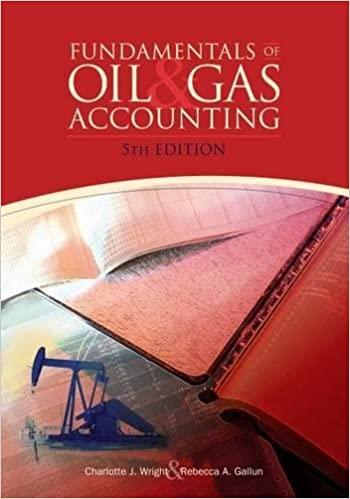Question
Year 0 1 2 3 4 5 HomeNet Units Sales (000s) 5555 50 105105 160160 215215 - Sales Price ($/unit) 5% 260 247.00247.00 234.65234.65 222.92222.92

| Year | 0 | 1 | 2 | 3 | 4 | 5 | ||
| HomeNet | ||||||||
| Units Sales (000s) | 5555 | 50 | 105105 | 160160 | 215215 | - | ||
| Sales Price ($/unit) | 5% | 260 | 247.00247.00 | 234.65234.65 | 222.92222.92 | |||
| Cost of Goods Sold ($/unit) | 20% | 120 | 96.0096.00 | 76.8076.80 | 61.4461.44 | - | ||
| Operating Expenses ($000s) | - | |||||||
| Hardware & Software Develop. | (15,000) | - | ||||||
| Marketing & Technical Support | (2,800) | (2,800) | (2,800) | (2,800) | - | |||
| Capital Expenditures | - | |||||||
| Lab Equipment | (7,500) | - | ||||||
| Depreciation | 33.33% | 33.33% | 33.33% | - | - | |||
| Marginal Corporate Tax Rate | 40% | 40% | 40% | 40% | 40% | - |
| Year | 0 | 1 | 2 | 3 | 4 | 5 | ||
| Incremental Earnings Forecast ($000) | ||||||||
| 1 | Sales | - | 13,000 | 25,935 | 37,544 | 47,928 | - | |
| 2 | Cost of Goods Sold | - | (6,000) | (10,080) | (12,288) | (13,210) | - | |
| 3 | Gross Profits | - | 7,000 | 15,855 | 25,256 | 34,718 | - | |
| 4 | Selling, General, and Administrative | - | (2,800) | (2,800) | (2,800) | (2,800) | - | |
| 5 | Research and Development | (15,000) | - | - | - | - | - | |
| 6 | Depreciation | - | (2,500) | (2,500) | (2,500) | - | - | |
| 7 | EBIT | (15,000) | 1,700 | 10,555 | 19,956 | 31,918 | - | |
| 8 | Income Tax at 40% | 6,000 | (680) | (4,222) | (7,982) | (12,767) | - | |
| 9 | Unlevered Net Income | (9,000) | 1,020 | 6,333 | 11,974 | 19,151 | - | |
| Free Cash Flow ($000) | ||||||||
| 10 | Plus: Depreciation | 2,500 | 2,500 | 2,500 | ||||
| 11 | Less: Capital Expenditures | (7,500) | ||||||
| 12 | Less: Increases in NWC | (1,050) | (1,328) | (1,411) | (1,418) | |||
| 13 | Free Cash Flow | (16,500) | 2,470 | 7,505 | 13,063 | 17,733 | 5,207 | |
| Year | 0 | 1 | 2 | 3 | 4 | 5 | ||
| Net Present Value ($000) | ||||||||
| 1 | Free Cash Flow | (16,500) | 2,470 | 7,505 | 13,063 | 17,733 | 5,207 | |
| 2 | Project Cost of Capital 1414% | |||||||
| 3 | Discount Factor | 1.000 | 0.87720.8772 | 0.76950.7695 | 0.67500.6750 | 0.59210.5921 | 0.51940.5194 | |
| 4 | PV of Free Cash Flow | (16,500) | 2,167 | 5,775 | 8,818 | 10,500 | 2,705 | |
| 5 | NPV | 13,464 | ||||||
How do I calculate the break-even annual sales price decline?
What is thee break-even annual unit sales increse?
You are evaluating the HomeNet project under the following assumptions: You depreciate the equipment, costing $7.5 million, over three years using straight-line depreciation. Research and development expenditures total $15 million in year 0 and selling, general, and administrative expenses are $2.8 million per year (assuming there is no cannibalization). Also assume HomeNet will have no incremental cash or inventory requirements (products will be shipped directly from the contract manufacturer to customers). However, receivables related to HomeNet are expected to account for 15% of annual sales, and payables are expected to be 15% of the annual cost of goods sold. Under these assumptions and assuming a cost of capital of 14%, calculate: a. The break-even annual sales price decline if: sales of 50,000 units in year 1 increase by 55,000 units per year over the life of the project, the year 1 sales price is $260/unit, and the year 1 cost of $120/unit decreases by 20% annually. See b. The break-even annual unit sales increase if: sales are 50,000 units in year 1, the year 1 sales price of $260 unit, decreases by 5% annually and the year 1 cost of $120 unit decreases by 20% annually. See a. The break-even annual sales price decline if: sales of 50,000 units in year 1 increase by 55,000 units per year over the lfe of the project, the year 1 sales price is $260/unit, and the year 1 cost of $120/unit decreases by 20% annually. See The break-even annual sales price decline is %. (Round to two decimal places.) b. The break-even annual unit sales increase if: sales are 50,000 units in year 1, the year 1 sales price of $260/unit, decreases by 5% annually and the year 1 cost of $120/unit decreases by 20% annually. See The break-even annual unit sales increase is units. (Round to the nearest integer.)Step by Step Solution
There are 3 Steps involved in it
Step: 1

Get Instant Access to Expert-Tailored Solutions
See step-by-step solutions with expert insights and AI powered tools for academic success
Step: 2

Step: 3

Ace Your Homework with AI
Get the answers you need in no time with our AI-driven, step-by-step assistance
Get Started


